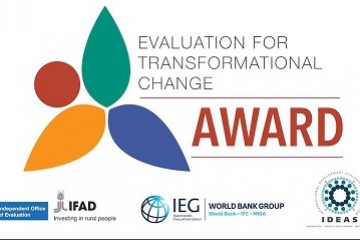Climate Change Bill in Catalonia: among the most ambitious in the world
On July 27th, while many people were set to start the summer holidays, the Parliament of Catalonia approved almost by consensus the Catalan Climate Change Bill (LC3, for its Catalan acronym). The resolution of this exceptional milestone received limited attention from media and civil society alike. Also, its recent suspension by the Spanish Constitutional Court went nearly unnoticed. At the moment, the Bill finds itself bounded by the political situation between Catalonia and Spain. Still, the development and initial deployment of this piece of legislation have valuable lessons to share.
The Bill, as a framework to tackle climate change policy is not a rare tool in the world. Today at least 29 countries count on a national-level legislative tool to specifically address mitigation and/or adaptation¹, in developed and developing nations. Some of the features of the LC3 make it remarkable at international level, and potentially a source of inspiration and lessons learned for many other national and subnational governments.
Pushing up climate ambition
The LC3 contains features among the most ambitious worldwide:
- Legally binding carbon neutrality target by 2050, coupled with a 100% renewable energy –based supply by 2050
- 2030 mitigation ambition pushed up, from -40% to -60% emission reductions compared to 2005 levels
- Consideration of consumption patterns by extending accountability to include consumption-based emissions inventories & LCA-based GHG emissions mandatory labelling schemes for construction-related materials and industrial products
- Ban to fracking licenses & advocacy towards the end of fossil fuels extraction in the Mediterranean area
The LC3 aims at reducing GHG emissions and vulnerability to climate change impacts and support the transition to a carbon neutral economy, which is competitive, innovative and efficient in the use of resources. More specifically, it aspires to contribute to a fossil fuels-free society, powered by a decentralised local renewable energy system. Among others, this is then translated into a 100% GHG emission reduction target by 2050, coupled with a 100% RE and nuclear-free energy supply, being the first ever long term climate goal agreed in Catalan legislation. With this target, interpreted by the author as a statement of intended carbon neutrality, Catalonia joins Bhutan, Costa Rica, Iceland, Liberia, New Zealand, Norway, Sweden, a few small islands states such as Maldives, and the Australian region of New South Wales. Some of these countries have an earlier deadline to achieve neutrality, with Costa Rica and New Zealand in the front line, and Bhutan committed to retain its current status of ‘carbon sink’. The Catalan goal is ill-defined in terms of the use of offsets, and the rules governing carbon sinks accountability.
Therefore, the ambition level comparisons are tricky. Within Europe, Germany and the Walloon region in Brussels are committed to an upper threshold of 95% reductions. The European Commission is preparing an update of its low-carbon economy roadmap for 2050, acknowledging that the bloc’s current target of at least 80% by mid-century is insufficient to meet the Paris goals, and pointing to carbon neutrality as the most likely updated target. France under Macron’s drive, and the UK busy with the update of its carbon budgets, are also discussing the alignment of their current goals with the Paris Agreement, and in that sense, referring to carbon neutrality by 2050. Catalonia’s LC3 may become the predecessor of the new 2050 carbon neutrality targets of the European Commission.
What is most exceptional about the LC3 target is that it becomes legally binding under the Bill. Binding long term targets are thin on the ground: UK (2008), Mexico (2012) and recently, Sweden (2017). This gives a strong signal on the journey ahead for Catalonia, as well as the necessity to establish permanent structures for tracking progress, accountability and transparency, and to support the development of an evidence base to inform an efficient transition. The LC3 defines mitigation milestones over time, consistent with the long-term goal. In doing so, it requires cutting GHG emissions by 40% in 2030 compared to 1990 levels (or 60% vs. 2005 levels). This implies an all-important increase of the current level of ambition, a more modest reduction of 40% compared to 2005 levels agreed in Paris. So about two years after Paris, the LC3 is requiring an additional cut of 12 million tons of CO2e by 2030, an amount equivalent to almost a third of the total current emissions. The decision is certainly extraordinary in context, noting GHG emissions are growing again and the economic recovery is supposed to have just started.
Another interesting element of the LC3 is the requirement to regularly develop consumption-based GHG emission inventories, in addition to UNFCCC data monitoring obligations. The objective is to provide means to inform policy development to influence the emissions deriving from consumption patterns. Notably France set a bold example by committing to reduce both production- and consumption-based emissions, the latter meaning reducing carbon emissions embedded in imported products and services. Whereas this discussion has long existed among academics and think tanks, it seems it is still far from becoming a tangible deliberation in the context of the UNFCCC. The LC3 sets up a mandatory scheme to label all construction-related materials and industrial products produced in Catalonia with the GHG emissions data associated to their life cycle by 2020 and 2021 respectively.
Lastly, the Bill prohibits the Government to issue fracking licenses, and demands all necessary efforts to trigger the declaration of the Mediterranean area as a ‘free-of-fossils fuels extraction’ area. Although the real impact of this measure may be limited in practice, it is highly symbolic. China had already surprised the world by putting a threshold on domestic coal extraction. More recently, France made public its intention to end oil and gas production by 2040 on its mainland and overseas territories, and so becoming the first country to do so. It is expected that fossil fuels import and refining activities will continue thereafter, although Macron is announcing significant measures to achieve full phase out of fossil fuels, for example, to end the sale of petrol and diesel vehicles by 2040. At local level, these cars are already banned from circulation in Paris by 2030 and by 2020 in the centre of Oxford in the UK. Beyond Europe, US, Canada, China, Australia and many countries in the Middle East will need to undertake similar commitments on the supply side, because avoiding dangerous climate change implies leaving unburnt in the ground 82%, 49% and 33% of existing coal, gas and oil reserves respectively.
Recurring to known climate policy instruments
Catalan climate policy is equipped by well-known policy elements that are considered necessary condition for an effective transition to a low carbon and resilient society: carbon budgets, carbon pricing & climate proofing into environmental impact assessment processes.
The LC3 establishes the concept of carbon budget –a GHG emissions quota allocated to an entity, an organisation or a territory for a specific timeframe. It mandates the Catalan Parliament to approve carbon budgets for 5-year periods, defining the overall share for organisations affected by the EU Emissions Trading Scheme (EU ETS). Inspired by the UK experience, the carbon budget should serve as a planning tool to support mainstreaming of mitigation objectives across sectors, be informed by an independent body of experts, and intent to have the blessing from a body representing a full set of actors from society. The budgets need to be approved 10 years prior to the start of the budget period, and thus, providing a long-term signal to markets and actors. The experience accumulated with the application of carbon budgets is growing exponentially since the UK introduced the policy instrument in 2008. Lessons learned suggest it is a critical tool to facilitate the integration of climate objectives in decision-making. It provides clarity and precise sense of direction. Though, it does not come without difficulties, because it is bound to confront political economy. The handicap is the interpretation of the system players about the potential division of the quota across sectors and territories. Catalonia will need to formulate a method to develop carbon budgets which gives answers to both, the mitigation objectives of the Bills, and technically feasible and economic sound sector- and/or territorial-based pathways to decarbonisation. In other words, a combination of bottom-up and top-down approaches, which ought to build on a diverse spectrum of actors’ knowledge and be nested in processes of dialogue and empowerment of citizens and actors. Generating carbon debt (i.e. exceeding the carbon budget in a specific period) is no option.
Green fiscal measures are not new either. Particularly with respect to a carbon tax, Catalonia joins 22 jurisdictions globally who have already implemented one. Prices in Catalonia are set to start at around 10EUR/tCO2 and increase up to 30EUR by 2025. The existing taxes have rather diverse scopes and exemptions structures, and prices – ranging from less than 5EUR to 126EUR in Sweden. What is unique is the proposed scope: all economic activities generating GHG emissions, including sectors affected by the EU ETS will be affected by the CO2 tax. This toll is an important element of the overall process of greening our fiscal system, together with the introduction of a NOx-based tax for large ships docking in Catalan ports, and an earlier approved C02-related tax for cars. The revenue of the CO2-related taxes will go into a newly created Climate Change Fund, i.e. earmarked taxes. The Fund has the objective to finance mitigation and adaptation action projects across the territory. Its principles, rules and criteria will need to be decided by the Inter-Departmental Commission on Climate Change of the Catalan Government. Full consideration of transparency and accountability is expected. The prioritisation of endowments should strictly be based on a well-grounded knowledge base about the cost-effectiveness of different measures, potential impact over time –in the short and long term-, desirable sequence of investments to avoid stranded assets and carbon lock-ins and economic and social implications of different options.
Lastly, Catalonia has a long track record of environmental impact assessment practices. The challenge that derives from LC3 obligations is similar to other legislations: refine the methodologies to produce definite thorough results. Quantitative indicators to establish red lines will be necessary – both for adaptation and mitigation purposes. How to deal with projects, plans or programmes that lead to an absolute increase of emissions –even if modest- where the Climate Change Bill requires to go to zero? Or on adaptation, what is the level of impact on water savings Catalonia is willing to accept, acknowledging water shortage risks and vulnerabilities? Climate authorities have a challenging task ahead.
Where ambition could be increased?
Some of the LC3 measures signal some of the traditionally difficult tasks for Governments implementing climate policy. Political will and technical astuteness will be needed to realise the full potential of these measures. They include appraisal of new infrastructure, mainstreaming of sector-based climate policy, and climate action allocated to the Government itself and its facilities. The all-important phase-out of subsidies for fossil fuels lacks a clear deadline and fails to include the primary sector.
In the context of environmental impact assessments, promoters of new infrastructures have to undertake an analysis of the impact of the infrastructure on GHG emissions and sinks capacity, as well as an appraisal of its vulnerability to climate impacts. The LC3 requires the establishment of monitoring measures and mitigation objectives. However, the risk of project-level assessments is missing the big picture. There is the risk of locking-in carbon stocks and giving rise to stranded assets as a consequence of a non-systemic approach. Individual promoters should be given the necessary means to understand whether the investment fits, and how, to a well-defined and purpose-oriented direction towards resilience and decarbonisation. In particular, public investments should be guided by a clear understanding of sequence of action required to transform the economy within time and budget constraints. Obviously, this roadmap can only be conceived in a context of multiple-objectives, including a range of development and well-being priorities. In other legislations, the appraisal for approving new infrastructure is not limited to its climate impacts, but it inquires the internalisation of the costs associated to its climate externalities (California, New South Wales). On the whole, a sense of long-term direction is essential for an effective appraisal of typically long-lasting and resource-intensive infrastructure.
The LC3 builds on existing practice, reiterates the co-responsibility for meeting the climate goals within and outside Government, and very importantly, requires all relevant authorities to integrate climate objectives as part of their activities. Similar to the Paris Agreement under the UNFCCC, the empowerment of the different actors in a bottom-up approach will only succeed if there is a shared end point that everyone is committed with. If this is not in place, the situation turns into a self-contenting process to self-define ‘fair contributions’ that in sum fall far below what is needed. The way out of this should include at least three elements. First, a stricter enforcement system, currently poorly established in the LC3 compared to other countries’ bills, together with a robust monitoring and accountability structures. Second, a hands-on and timely support to decision-makers in the form of rigorous knowledge and information, facilitative processes to deal with cross-sectoral technical and political challenges and a metrics uniform system that supports design, implementation and evaluation of measures. Third and last, the provision of a shared common purpose which is well adhered in the political economy. The three elements are equally challenging for mitigation and adaptation, with a higher strain on the latter with regards to metrics and accountability.
The LC3 dictates a set of executive obligations to green the Government, such as audits for public buildings, fleet renovation with electric cars or purchase of green electricity. Acknowledging the cost of some of these measures and administration inertia, the LC3 gives a further push for the Government’s ideal to become a referent in the transition. However, the ambition is low in light of the overall objectives of the Bill, and in comparison to some other jurisdictions. In the Canadian Province of British Columbia, carbon neutrality in public sector operations was achieved back in 2011. In the UK², large public organisations are required to buy CO2 allowances for every tonne of carbon they emit –possible next steps for the Voluntary Agreements programme in Catalonia. In France, all public buildings have an energy consumption threshold, and where possible, it requires them to be energy positive. For the Catalan Government to gain credit on its leadership, as well as boost the economic sectors and technology deployment, it must strengthen the public-sector programme. Building on the Bill requirements, the very first stage could be the setting of quantitative objectives and indicators and clear deadlines –where they do not exist-, ensuring the necessary economic resources, and establishing an enforcement and sanction system.
To end, the LC3 announces the end of subsidies related to fossil fuels, in line with G7 agreement to terminate inefficient subsidies by 2025. However, the Bill is not bold enough to set up neither a deadline nor responsibilities. The subsidies for the fuels running machinery of the primary sector are excluded from this, appealing to the lack of alternatives. More in general, the Bill also demands the Government to revisit its incentive policy and to adapt it to the newly established climate goals. But only political will is not enough to determine the effectiveness and pace of deployment of this measure, and more importantly, how it is perceived by non-public system actors. Perhaps, the next step should be joining the international divestment movements, following the Swedish example. Divestment simply means getting rid of stocks, bonds, or investment funds that are unethical or morally ambiguous -in this context, that are incompatible with the attainment of the Bill’s goal.
From the Bill to climate action, main challenges to be expected
The LC3 provides a clear long term signal towards the transition to a resilient and zero carbon society, together with a robust set of mainly normative and fiscal measures. It also establishes a transparent accountability basis for the mainstreaming and coordination of climate policy. However, effective implementation of the Bill is not guaranteed. Critically with climate policy, top-down enforcement does not necessarily work. To succeed, the right synergies and commitments will need to be built. Action on the ground will need to take place. This is hard work, with ill-defined responsibilities.
Catalonia has significantly increased the knowledge on the impacts of climate change since its first adaptation strategy was adopted in 2012. However, as the Catalan Climate Change Office states³, the translation from knowledge to increased adaptative capacity has not been sufficient albeit the numerous measures that have been implemented. With regards to mitigation, Catalonia is at 5,9 tCO2e per capita⁴ (2015), after an important decline of 3% per annum over the 2005-2015 period. Progressing further on both adaptation and mitigation will be tough in the sense that measures used until now and gathered pace will not be sufficient. In this context, the word “engagement” is key to enable the LC3 to become a game changer.
Thus, public authorities should increase efforts to trigger the engagement of the local private and finance sectors. There is some complicity from the private sector around the world, from commitments to actions and investments (or divestments). Some Catalan corporations have joined this movement too, mainly on mitigation matters, but the majority of small and medium enterprises and many larger industries have been impassive. The Bill requires companies with more than 250 employees to take direct action: GHG emissions inventories, risk assessment and action plans to reduce both emissions and vulnerabilities, in order to be eligible for any economic support or commercial agreement with Government. We move from voluntary to pseudo-mandatory paradigms. This may not be enough as the German experience reveals: with emerging concerns with regards to meeting the 2020 target, leaders are being accused of being too intimate with carmakers, providing tax breaks and support for diesel⁵. Moreover, leading investors around the world are adjusting their portfolios to address climate change risk and capture opportunities stemming from the transition, with remarkable movements from the New Zealand Super Fund⁶, the $92bn Danish pension fund⁷ or the UK pension funds⁸. Re-addressing investments to meet climate objectives will be needed in Catalonia too, and this is far beyond the establishment of the Catalan Climate Change Fund which plays a small, albeit critical role, in putting our money where our mouth is.
Profound engagement needs to be secured within public sector representatives as well. The LC3 loads the responsibility of climate policy to the different departments that are designing and executing agriculture, water, waste, energy, industry, forestry related-policies. It also allocates responsibilities to Treasury, trade and international affairs departments. Uncommitted representatives from any area can put the main goal of the Bill at risk. Slow development of new regulation necessary to implement some of the LC3 measures could undermine the mitigation outcome in the 2020 period, and consequently, may shoot up the cost of compliance later on. Transparent accountability will be key, and thankfully, there is abundance of good examples around the world (UK, Mexico, France or Sweden, to name a few).
Most importantly, citizens will need to be engaged for the mitigation and adaptation goals to be met. The LC3 creates a couple of spaces to bridge climate policy and civil society. A “Social Table” gathering representatives from different sectors needs to be consulted prior to approval of the main climate decisions and informed about the progress towards goals. The Parliament is required to approve carbon budgets and reporting against mitigation objectives. These two spaces could just become an empty shell without sufficient mobilisation, inclusivity and access to research and evidence base. Other jurisdictions have embarked in deep participatory processes of the entire range of system actors to jointly unpack the underlying policies and measures, costs, risks and opportunities for different low-carbon paths and adaptive responses (for example, Wallonia in Belgium, France, Chile, Brazil, South Africa).
On the whole, the Catalan Climate Change Bill is a real opportunity and it is worth to be shared. It provides for an excellent basis to tackle the transition to a resilient low carbon society. It brings along a number of challenges, both technical and political, and puts pressure on the current system to prove ability to deliver its implementation. From a climate perspective, there is no other choice than advancing in this direction.
¹ Own analysis based on data available at Climate change Laws of the World database by Grantham Research Institute and the Sabin Center. Accessed on 25th September, http://www.lse.ac.uk/GranthamInstitute/climate-change-laws-of-the-world/
² Under the CRC Energy Efficiency Scheme.
³ See “Seguiment i Avaluació de l’Estratègia Catalana d’Adaptació al canvi climàtic. (ESCACC, Horitzó 2013-2020)”. February 2017. Available at: http://canviclimatic.gencat.cat/ca/politiques/politiques_catalanes/ladaptacio_al_canvi_climatic/escacc/seguiment-i-avaluacio-de-lescacc/
⁴ Source: Catalan Climate Change Office, http://canviclimatic.gencat.cat. Available at: http://canviclimatic.gencat.cat/web/.content/home/politiques/inventaris_demissions/inventaris_demissions_a_catalunya/Infografia-Inventari-Catalunya-1990_2015.pdf
⁵ See https://www.nytimes.com/2017/08/02/business/energy-environment/germany-diesel-car-emissions.html
⁶ In August 2017, 40% of the New Zealand NZ$35 billion Super Fund became low-carbon: https://www.nzsuperfund.co.nz/news-media/nz-super-fund-shifts-passive-equities-low-carbon
⁷ http://www.reuters.com/article/us-climatechange-investment-denmark-idUSKBN1AB1M6
⁸ https://realassets.ipe.com/news/investment-vehicles/uk-pension-funds-allocate-11bn-to-blackrock-renewables-fund/10019933.article




